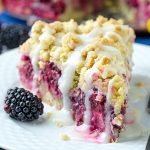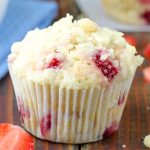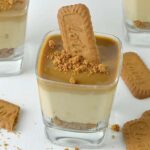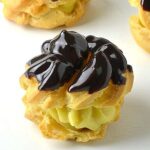I love the aroma and taste of coffee that I am always trying out novel techniques to brew high-quality homemade coffee.
Regardless of the quality of your coffee machine, you can upgrade the standard of your coffee using some techniques.
The following are seven suggestions for improving the taste of your drip coffee.
1. Purchase fresh, whole bean coffee
Beans are a key ingredient in brewing and determine the quality of your coffee.
Are you purchasing pre-ground coffee? You got it all wrong! Begin with fresh coffee beans such as these from https://coffeeovercardio.com.
Coffee companies rarely provide information on the coffee roasting date. Some of them want to hide the fact that roasting was done a long time ago. This means that the stuff from the grocery store may be a bit stale. Coffee’s peak flavor is reached some days after the roasting process. Preferably, it should be consumed within 30 days of roasting.
For fresh, whole coffee beans visit your local coffee shop. Some do roasting instantly, others obtain their supply from local roasters in small quantities. This leads to fresher coffee.
2. Properly store beans
Keeping your coffee under the right conditions will guarantee that it retains its fresh flavor.
Freshness in your coffee will depend on how you are storing it. A standard Mason jar is sufficient but a one-way valve, vacuum sealed container is considered the best option for storage.
If you can afford several mason jars of varying sizes the better. Shift the coffee to a fitting jar as you gradually brew it. A quart sized jar (0.94 liters) with a broad mouth is adequate for holding twelve ounces of coffee. As you slowly brew your coffee reduce the jar size to lower sizes such as a pint-sized one (0.47 liters) or utilize 4-ounce jars to stock measured servings.
3. How and when you grind matters
Experts have estimated that coffee starts to lose its distinctive taste and aroma within half an hour of grinding it. Thus for the best flavor, it is important to grind it just before commencing brewing.
Grind size and uniformity have significance, as well. If the coffee particles have large grains you will prepare terrible coffee. On the other hand, very fine particles are highly soluble leading to bitter coffee. A medium grind to a medium-fine one is what is recommended by most drip coffee makers.
A manual hand mill is a cheap solution to get the desired medium to medium-fine grind. You only require to apply some manual effort. However, if you have some spare cash you can invest in an automatic burr grinder that goes for about $100 (approximately £79 and AU$143).
Blade grinders can also do the job. However, they grind inconsistent particle sizes that can cause over-extraction.
4. The correct way to measure your coffee
Instead of using volume quantify coffee by weight.
Brewing superior coffee is based on having uniformity. One way to ensure that is by utilizing identical quantities of coffee for similar quantities of water every time you brew. A digital scale is a time saving and accurate way to measure the quantities of coffee and water that are applied for each brew.
Preferably, a ratio of 1 part of coffee to 20 parts of water, that is, for instance, 7.5g of coffee and 150 milliliters of water will lead to a powerful cup of coffee. The ratio is subjective, some can go as low as 1:30 while others can have a high ratio of 1:14. Your own preference will determine what works for you based also on how easily you can replicate the brewing process.
5. Pre-infuse your grounds
It is highly likely that your drip coffee maker omits a key step.
A lot of automatic coffee makers are lackluster in fashioning the coffee grounds for exhaustive extraction. Pre-infusion, also known as “bloom” is necessary for manual pour over cones which are similar to automatic drip equipment. Pour hot water on the ground area to free any carbon dioxide that remained behind after roasting. Skipping this process during coffee preparation means that there will be a presence of carbon dioxide that will repel water during brewing. This will weaken the brew.
To pre-infuse, place a filter in the hopper and then append your coffee grounds. Preheat a quarter cup or 50ml of water to at least 200 degrees Fahrenheit using a kettle. After heating, steadily drain the hot water over the grounds ensuring that all of them are completely wet. Allow it to rest for about 45 seconds before you get the coffee maker going.
6. Use the right temperature to brew
Many automatic machines do not achieve the best temperature for brewing.
This means that a lot of coffee makers brew coffee in sub-optimal temperatures. The required heat intensity for brewing drip coffee is 195-205 degrees Fahrenheit. Recent high-end makes have a manual temperature adjusting function which older, inexpensive models lack.
To ensure your coffee brewing machine reaches optimal heating temperature, start it without putting coffee in the hopper and track temperature using a thermometer. If possible, try to get the temperature reading when brewing. Water temperature will probably fall as it goes past the hopper and into the carafe below. If the water does not get to 195 degrees Fahrenheit try using a kettle to pre-boil your water.
Remember, do not heat above 205 degrees Fahrenheit. Temperatures above this level will burn the coffee. If pre-boiling is not effective you might have to consider buying a modern coffee maker. Any coffee shop worth its salt does this, so you should also do so at home.
7. Use quality water
In brewing the quality of water used is an aspect that is not emphasized enough. Hard water containing minerals hinders the extraction process as the minerals do not bond well with dissolved coffee granules leading to poor extraction and hence bad coffee. Minerals such as lime in the hard water also deposit and build up on your coffee maker. This will be a huge inconvenience that will force you into descaling your coffee maker regularly.
Also, water that is highly distilled or filtered can cause destruction to your coffee maker. There may be no build-up of hard minerals on your equipment but the absence of minerals and ions from distilled water will lead to leaching of minerals from metal parts of your coffee maker leading to the gradual degradation of the functionality of the machine over time. Distilled water also has higher bonding capability that can cause over-extraction during brewing.
The ideal water specification is one that is balanced, with a mineral composition of roughly 150 parts per one million. To have ideal water for your brewing process you can utilize distilled water that has been mixed with Third Wave Water’s capsules. For a casual drinker, filtered water from the refrigerator or from a water filter pitcher is of sufficient quality to give a good brew.






Leave a Reply